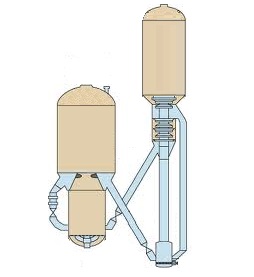RL Blogs

By Optimization Specialist Robert
Nov 09, 2016Highlighting the major factors involved when establishing your FCC Riser settings. |
||
|
the different types of FCC products yielded over a Riser severity range. Depending on commodity prices and refinery balances, FCC Riser settings can be very dynamic.
It’s not uncommon for many refiners to get it wrong, and many Refiners are examining this question today. Most planning analysts rely on a LP to spit up the answer without properly defining the boundary conditions, but here I explore the fundamentals behind key drivers.
Yields
One important aspect of understanding Riser optimization is determining the cracking pattern over your unit’s severity range. In addition to defining the over-cracking regime, it will be essential to obtain a set of product yields at multiple riser points. The yield vectors will be key in analyzing yield trade-offs with commodity prices.
Natural Gas Prices
The FCC is a large fuel gas producing machine, and this is a big considering for refineries with natural gas import capabilities. As the price of natural gas has remained low in recent years, many have questioned the merit of maximizing riser temps. While volume expansion benefits favor higher conversion, cracking distillate or gasoline into natural gas appears unfavorable when N.G. prices become very depressed.
Distillate Prices
We’ve all seen the recent articles written about FCC units having a decreased role in modern refining. Aside from natural gas prices, the second largest market indicator for influencing the FCC Riser setting is the relationship of gasoline and distillate prices. Refiners that have the ability to convert LCO into Diesel should give higher scrutiny to FCC Riser when distillate prices invert significantly above that of gasoline. The U.S. paradigm of maximizing gasoline production has shifted once again and maximizing distillate production has regained focus.
Butane Prices
When discussing FCC operations one often needs to factor in Alky economics, and FCC Riser optimization is no different. As the Alky consumes isobutane during processing of FCC olefins, understanding the butane market plays a factor. When summer RVP specifications limit butane upgrades to gasoline, the price of isobutane becomes depressed, thus improving alklation economics. The converse is true during the winter, and decreased incentive for olefin production places downward pressure on FCC Riser.
Value of Octane
Similar to butane price effects on alkylation incentives, the value of octane influences Riser settings by driving Alky economics. In the U.S. environment where ethanol mandates have improved refinery octane balances, the value of alkylate as a high octane gasoline blendstock has declined. Analysts still need to consider the impact of Riser on FCC Gasoline octane value, but the days of instinctively maximizing riser to increase alkylate production have changed.
Hydrogen Balance
The FCC carries an advantage of swelling product volume, but comes with the trade-off of producing hydrogen deficient molecules. The olefins in FCC gasoline often get saturated during gasoline processing, but the more significant hydrogen requirement comes with LCO processing. Refineries tight on hydrogen availability may often lack sufficient hydrogen to convert all of the LCO to diesel. In these scenarios diesel may be optimally produced elsewhere, thus refiners may choose to increase FCC Riser as a means of balancing LCO.
The economic considerations discussed above play a critical part in understanding how to set FCC Riser temperatures. Often times there are refinery configuration and hardware constraints that factor into the analysis. Many of these constraints have been simplified in the summary above, but have been listed below as other factors to consider:
Optimizing the Riser Temperature setting on any FCC requires deep understanding of refinery economics. As market drivers have changed significantly over the recent years, and will continue to evolve, grasping the fundamentals remains key to maximizing refinery profitability. | ||
|










